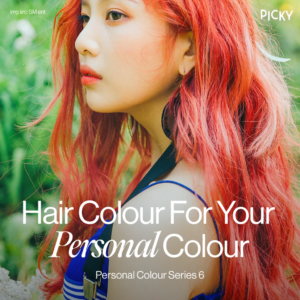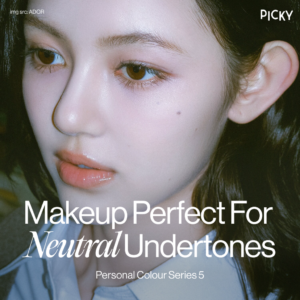We’ve all heard of a life hack that sounded too crazy to be true. You’re going to have to add a few more to that list, because we found four skincare hacks that you should definitely know! Read on to see how versatile some products can be, and what skincare hacks you can start adding into your product today!
1. Chemical Exfoliants as Deodorant?
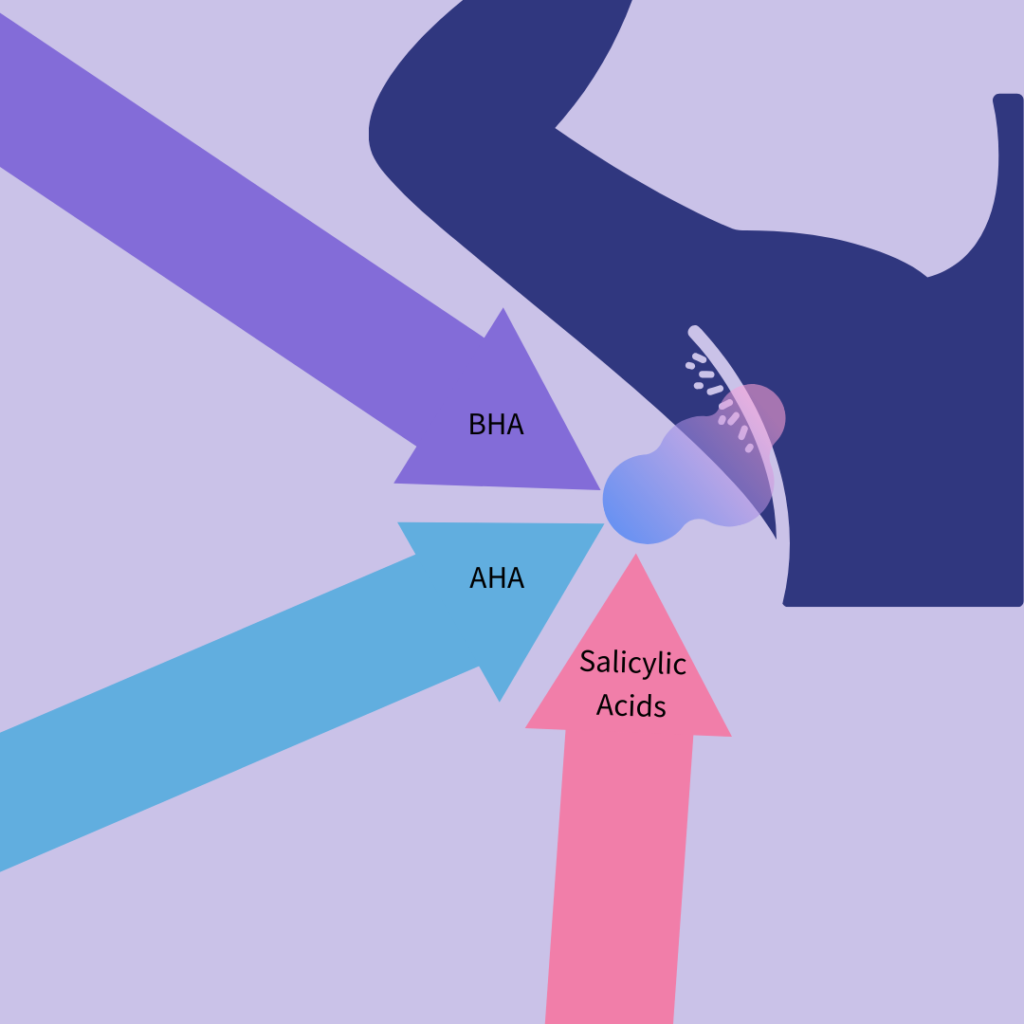
Chemical exfoliants like AHAs and BHAs are great for brightening and smoothening the face. But, did you know that they can also be used as deodorants?
Body odor comes from bacteria and odor-forming chemicals that make sweat smell. Without these chemicals, the bacteria wouldn’t have anything to grab onto and fester. Armpit skin has a natural pH of 5.5-5.6, which odor-causing bacteria can comfortably grow in. So, changing the pH balance could essentially disrupt bacteria formation and de-stink your armpit!
However, the pH of chemical exfoliants are a bit lower on the scale, so the effectiveness of using them to remove odor from your armpits can very much from person to person. However, many who have tried replacing deodorant with chemical exfoliants have reported good results, making your AHA and BHA products possible to be used on both the face and on the underarms! Do remember that this hack only works to remove odor – you should still use an anti-perspirant to stop the sweat. Also, shaving can help keep down the stink, since less that decreases the surface area for bacteria to survive off of!
2. Niacinamide and Vitamin C Serum For Your Underarms?
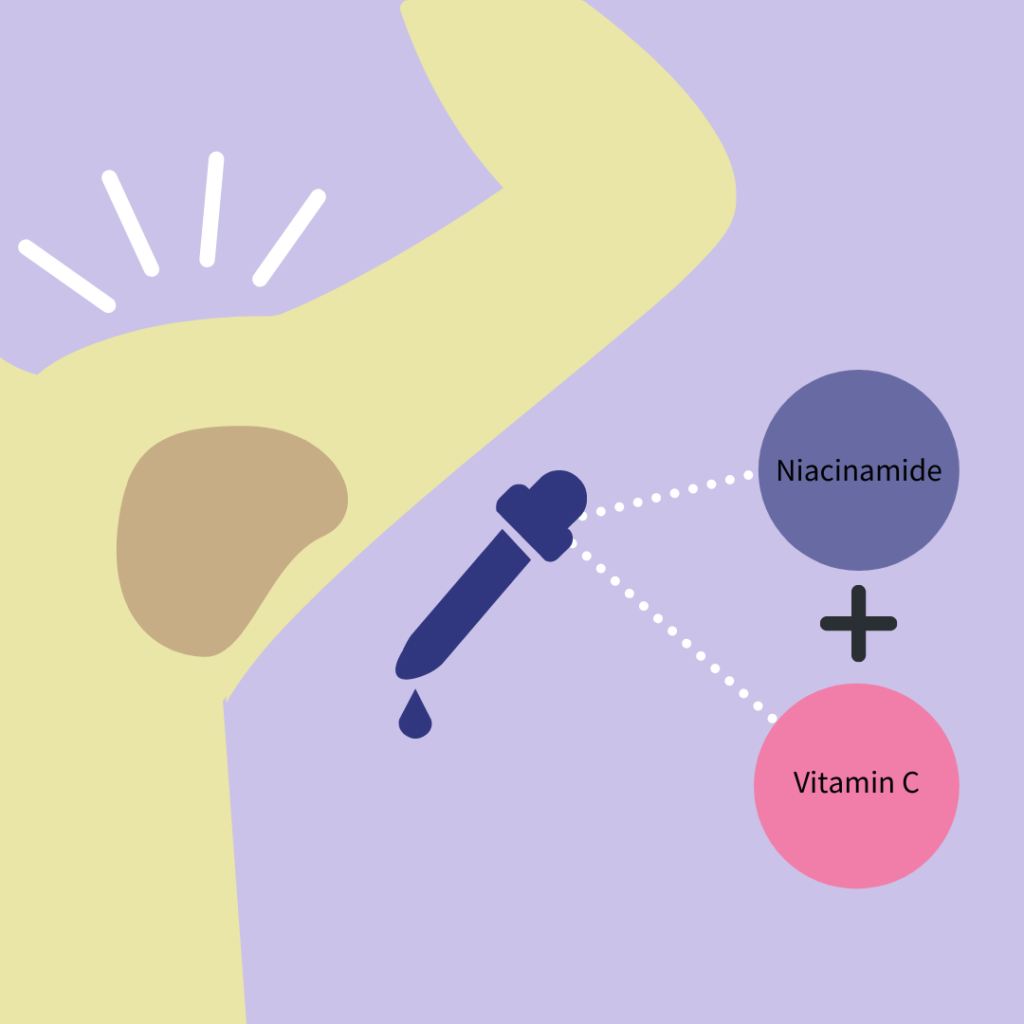
You already know that niacinamide and vitamin C are great for brightening your complexion. But, guess what else they’re good for? Underarms!
Due to constant shaving, your underarms can develop hyperpigmentation and cell build up which can cause inflammation, irritation and become overall darker in tone. We’ve found that vitamin C and niacinamide are suspected saviors for this condition, and can help lighten up these areas!
Niacinamide is great for reducing inflammation and brightening dark spots. Vitamin C helps lighten hyperpigmentation and darker spots by inhibiting the skin’s production of melanin, and therefore can help even out the skin tone and fade darker spots. These two ingredient can be a powerhouse for lightening those darker areas on your body! For products with these ingredients that you didn’t like on your facem consider using them on your armpits for some brightening action instead of throwing them away. Here’s another pro-tip: these ingredients can also have a similar brightening effect on the knees and joint areas with darker skin!
3. Eye Drops on Pimples and Dark Circles?
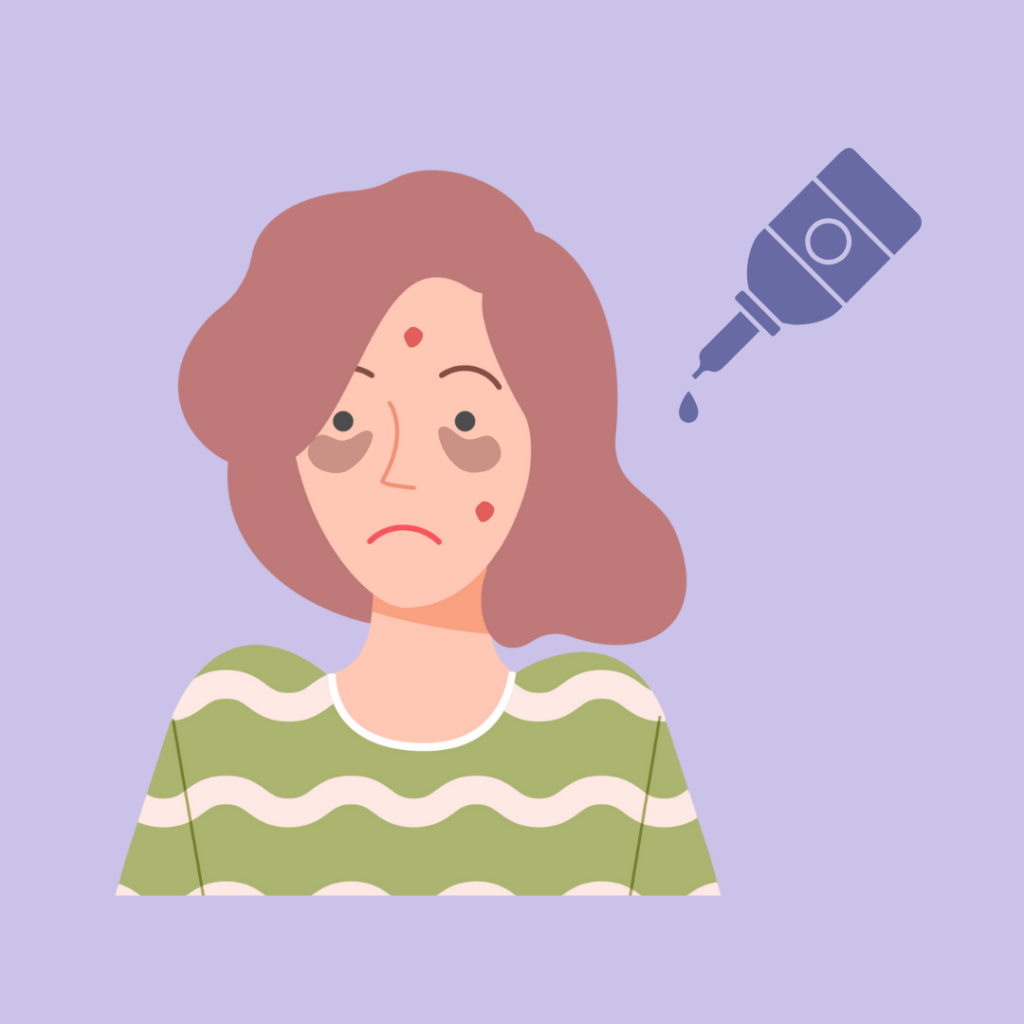
Have dry eyes or contacts? This means you might have some Visine laying around, and trust us, Visine has way more uses than it gets credit for.
Undereye circles can come from broken or damaged blood vessels, which can darken the skin to give the appearance of dark circles. Apparently, Visine can help with this as it functions to constrict blood vessels, and can therefore lessen the appearance of dark circles!
There’s more! In the same vein, Visine can therefore also help to reduce swelling and redness of pimples. However, it will not make the pimple disappear, so you’ll still need proper acne-treating skincare for that.
If your dark circles are due to hyperpigmentation, this hack probably won’t work for you. Luckily, we have plenty of products to scroll through with the new hyperpigmentation filter on the Picky app. Update your Picky app to enjoy our latest hyperpigmentation skincare concern filter now!
4. Eye Cream Or Face Cream As Makeup Remover?

More than just a moisturizer, face and eye cream can also be multipurpose! Since eye creams and face creams are emollients, they can also help to remove residue off your eyes and lips. This could be a helpful trick the next time you forget to pack your makeup remover!
Enjoyed these skincare hacks? Want to learn more about what products can help you out? Log into Picky to discover more skincare products compatible with your skin type. Don’t forget to also follow us on Instagram and read more from our blog for more skincare science content!















